Set Comprehensions in Python are a powerful tool for quickly and efficiently creating sets. In this guide, you will learn how to apply this technique to extract letters from a text that are not vowels. By using set comprehensions, you can minimize your lines of code while increasing the readability of your code.
Key Insights
- You can efficiently create sets using set comprehensions.
- Set comprehensions are ideal for performing more complex filtering on data.
- By using conditions in comprehensions, you can select specific elements.
Step-by-Step Guide
First, we start by creating a simple set comprehension based on a text. We take a sample text that does not have a clear meaning but serves as an exercise.
In this guide, we use the text "lorem ipsum", a well-known placeholder text, to illustrate how set comprehensions work. You can replace this text at any time with another to apply the technique to your own data.
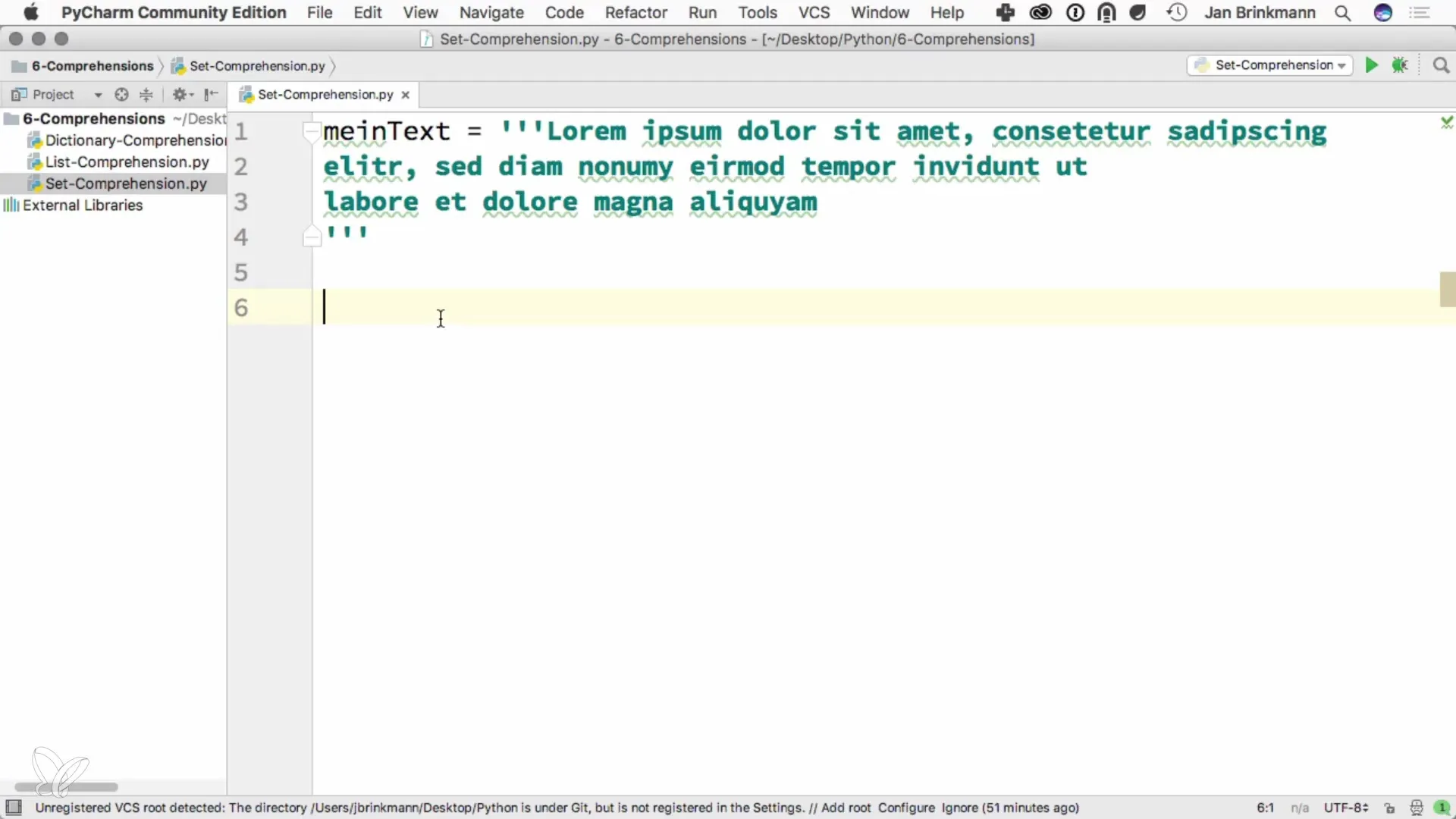
Our first step is to define the letters we want to filter out. Here, they are the vowels: "a", "e", "i", "o", and "u". We have already defined these vowels in our variable.
Now, we proceed to create an empty set where we want to store all letters that are not vowels. This is done by setting up a loop that iterates through each letter in the text and checks whether it is not contained in the set of vowels.
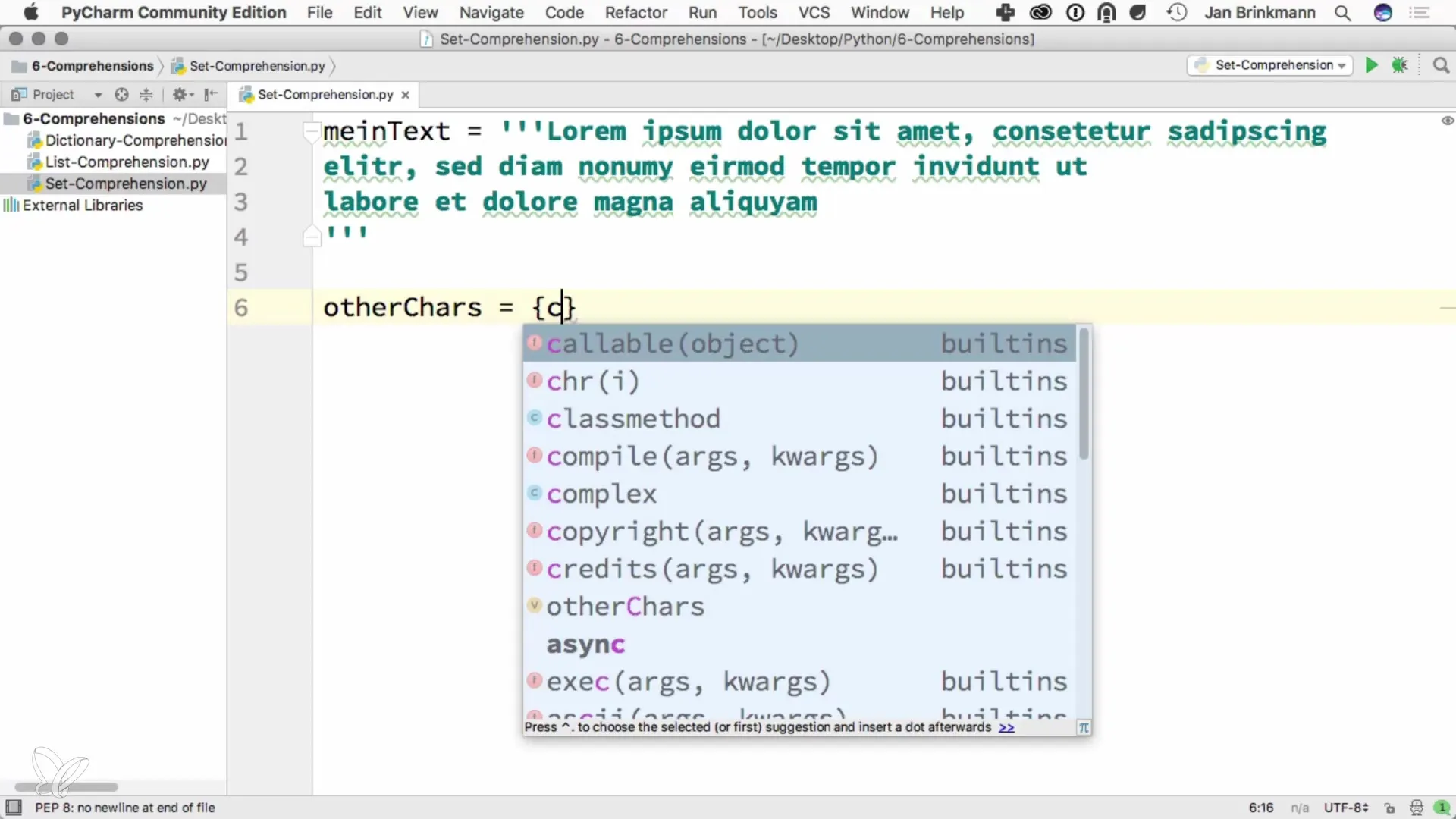
For iterating over the letters, we use the syntax of a set comprehension: {char for char in my_text if char not in vowels}. This is a shortened form that is not only simpler to read but also executed efficiently.
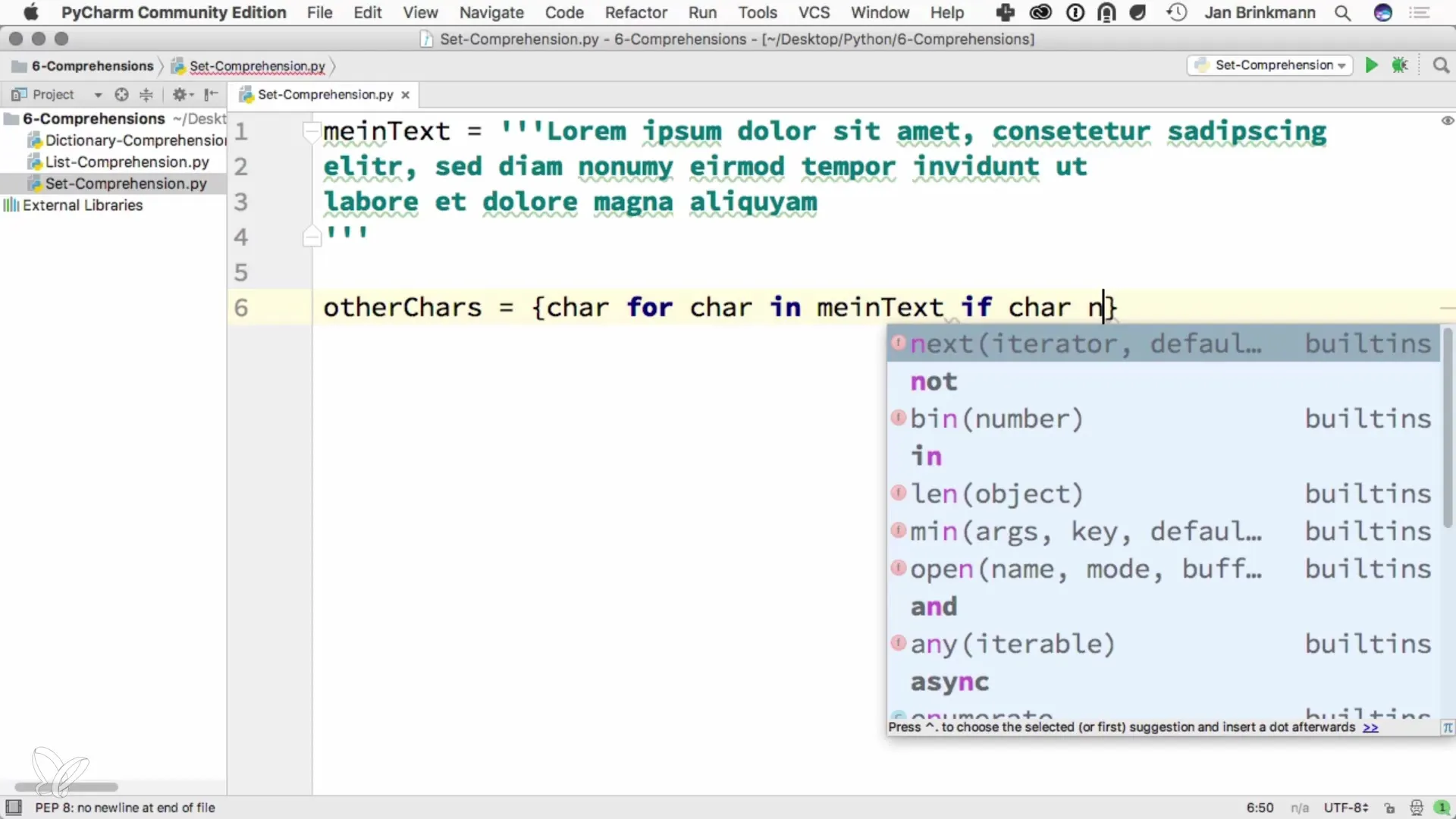
Once we have created our set comprehension, we can print the result. When executing the code, it will show us which letters from the original text are used that are not vowels. This way, you can see the filtering in action.
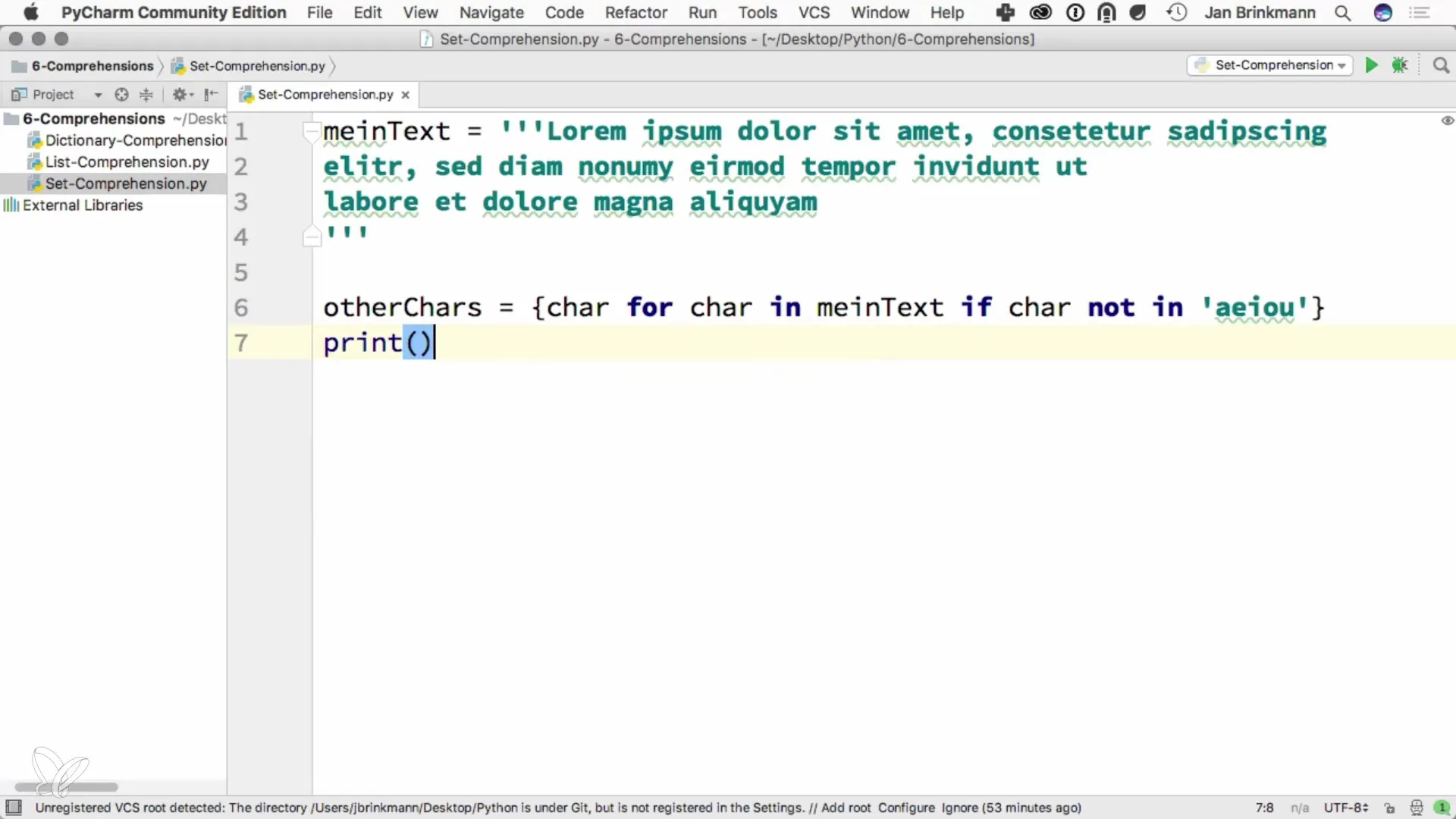
Additionally, we could modify the code to represent all letters in uppercase. This increases readability and makes our results clearer. With the small change of the method.upper() for our set, we can transform the letters.
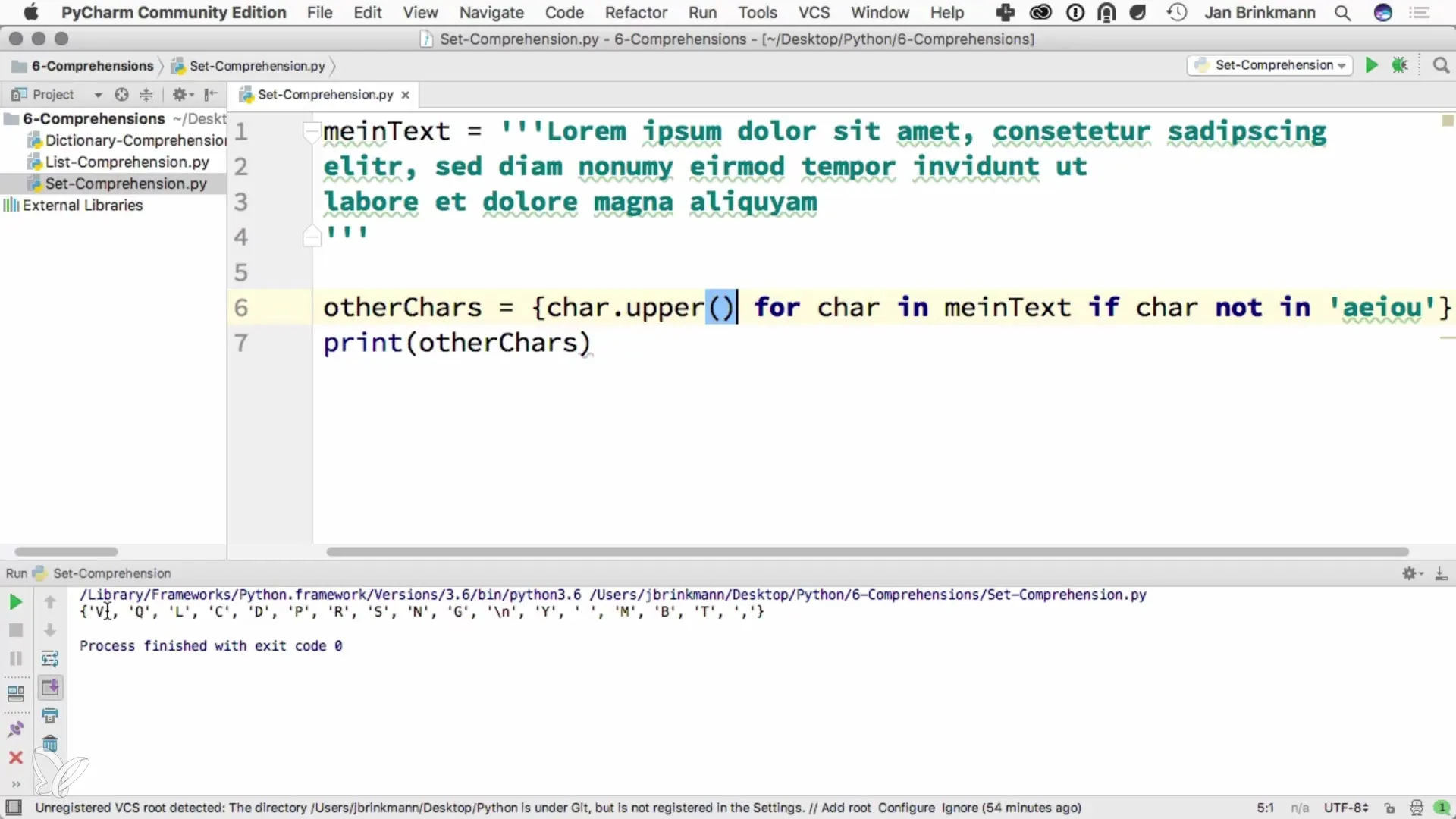
Now you can apply more complex filtering and adjustments to your own datasets. Set comprehensions provide you with an effective way to simplify your programming tasks while still remaining clear and understandable.
Summary - Set Comprehensions in Python: A Step-by-Step Guide
By using set comprehensions, you can efficiently create and manage sets in Python. They allow you to quickly filter and preprocess data without having to rely on long and unwieldy loops. Each line of code is clearly structured and easily understandable.
Frequently Asked Questions
What are set comprehensions in Python?Set comprehensions are a compact and efficient method for creating and filtering sets.
How does the syntax work in set comprehensions?The syntax is { expression for element in iterable if condition }.
Can I use set comprehensions for other data types as well?Yes, set comprehensions can also be applied to lists or dictionaries.
Is it useful to use set comprehensions?Yes, they provide more compact, readable code and reduce the number of lines needed.
Do set comprehensions support different conditions?Yes, you can use as many conditions as you want in a set comprehension to refine the selection.


